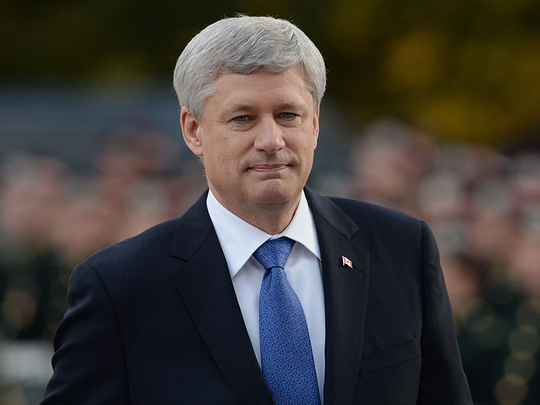
For almost a decade, Canadians of a certain stripe have complained that their country could do great things again — if only it weren’t for Conservative prime minister Stephen Harper. Last Monday’s election offers the chance to find out if that’s true.
Harper lost to the Liberal Party, whose campaign platform would make Bernie Sanders blush: Higher taxes for the rich, legalised marijuana, mandatory voting, more action on climate change, a quota for women in the cabinet, tighter restrictions on political spending, tougher gun control, more worker protection and greater limits on government surveillance. The incoming Prime Minister, Justin Trudeau, even mused earlier this year about loosening restrictions on euthanasia and prostitution.
Unlike in the United States, where a president must negotiate bills with an independent legislature, a Canadian prime minister with a majority in parliament can pretty much do what he wants. There are only two real constraints: How much does the Liberal Party want to accomplish these things? And how much will Canadians care if they do?
The party’s recent past doesn’t inspire confidence. The last two Liberal governments, under prime ministers Jean Chretien and Paul Martin, left no obvious legacy of progressive achievements. Their greatest success was breaking the cycle of federal deficits, leaving Canada to weather the global recession with its finances in better shape than most of its peers.
The party slowly collapsed, weakened not just by internecine warfare and scandal, but also a deeper malaise: Uncertainty about what it wanted to accomplish. (As student at McGill University, I recall members of the school’s Young Liberals club defending their party’s inaction on the grounds that all the country’s big problems had been solved.) Harper’s ascendancy could be explained partly by voters’ desire for somebody who could convincingly answer the question of why he wanted to be prime minister (even if the answer was mostly to cut taxes).
Liberals’ uncertainty about what to do with government is no accident, and despite the magnitude of Monday’s victory, there’s no reason to think it’s been resolved. The Liberals are Canada’s Clintonian Democrats: Willing to expand government but sensitive to business interests, concerned with the public good but just as worried about political expediency.
An instinct towards pragmatism is probably healthy, but coupled with a fundamental ambivalence about policy goals, it means the Liberals will be cautious about which of their 106 platform pledges become priorities. The party will mostly go where the broad middle of public opinion tells it.
That’s why the next several months could reveal a lot about the political orientation of modern Canada — much more than was revealed by Monday’s vote, which primarily showed the rejection of a dated prime minister and the consolidation of the left-wing vote.
If Canadians accept a few new tax breaks for the middle class, vague pledges on climate change and some symbolic shifts — letting in more Syrian refugees, perhaps, and dropping the previous government’s efforts to ban niqabs (face veils) in citizenship ceremonies — as the fulfilment of the Liberals’ promise of change, then the complaint that Harper was holding the country back will look hollow.
If, however, the Liberals feel compelled by public opinion to tackle, early on, the more controversial issues they ran on — achieving a meaningful price on carbon, rolling back Harper’s tough-on-crime policies, reforming drug and prostitution laws, changing the way members of parliament are elected — then the argument that Canada is a progressive country at heart, long thwarted by a prime minister who wasn’t, will acquire some meaning.
Canada’s big problems haven’t been solved. We’re about to see how much Liberals, and Canadians in general, want to try.
— Washington Post









